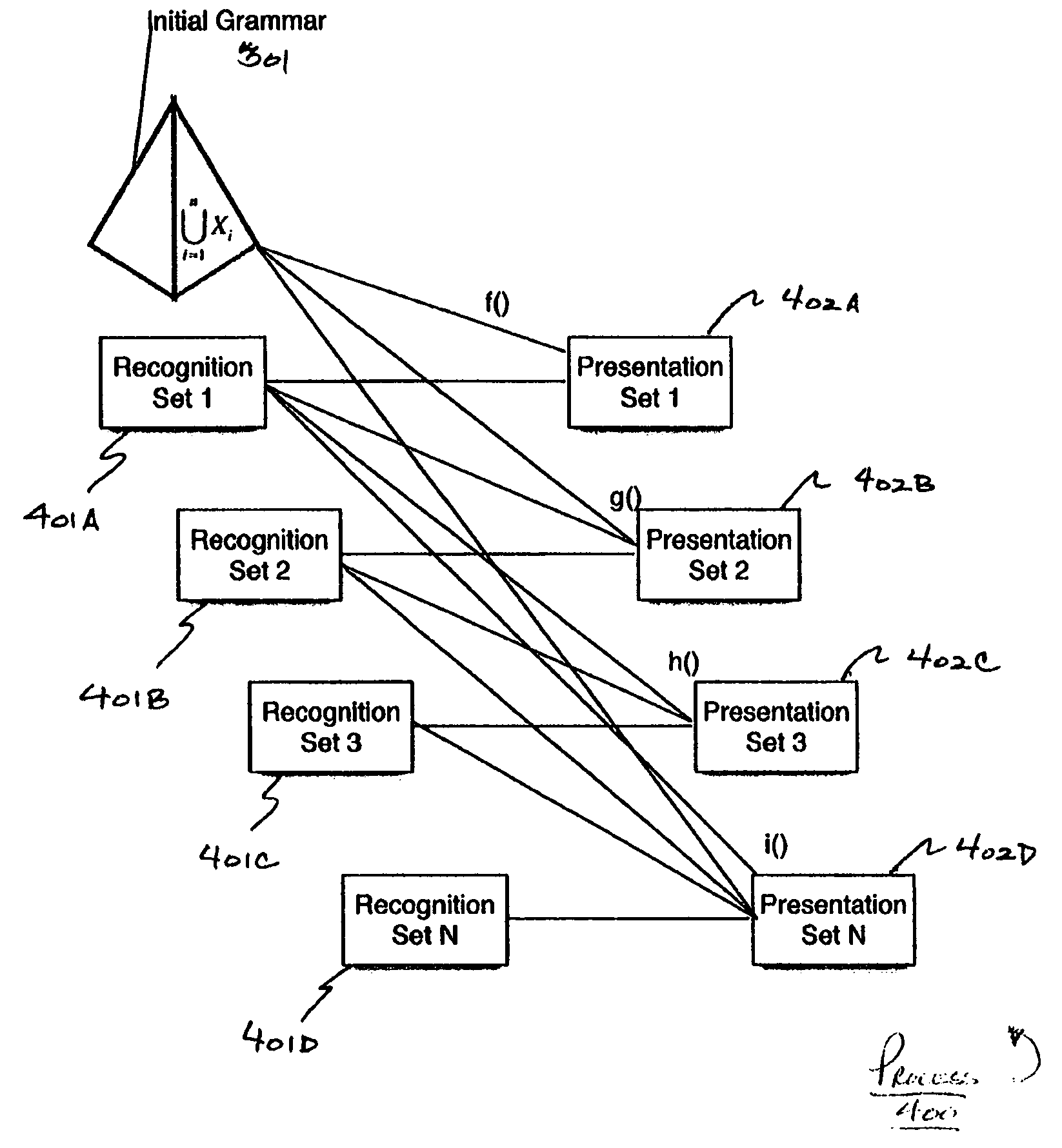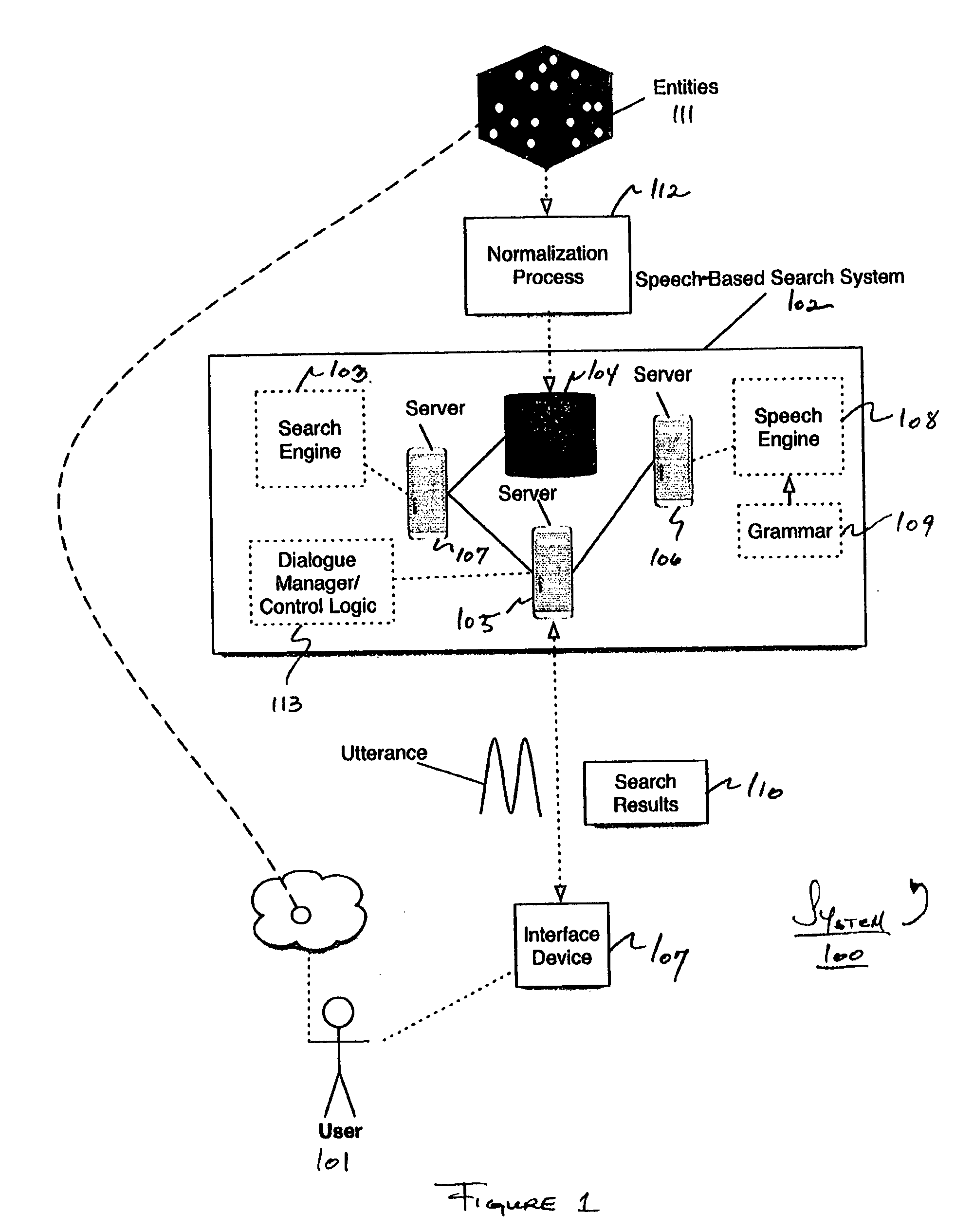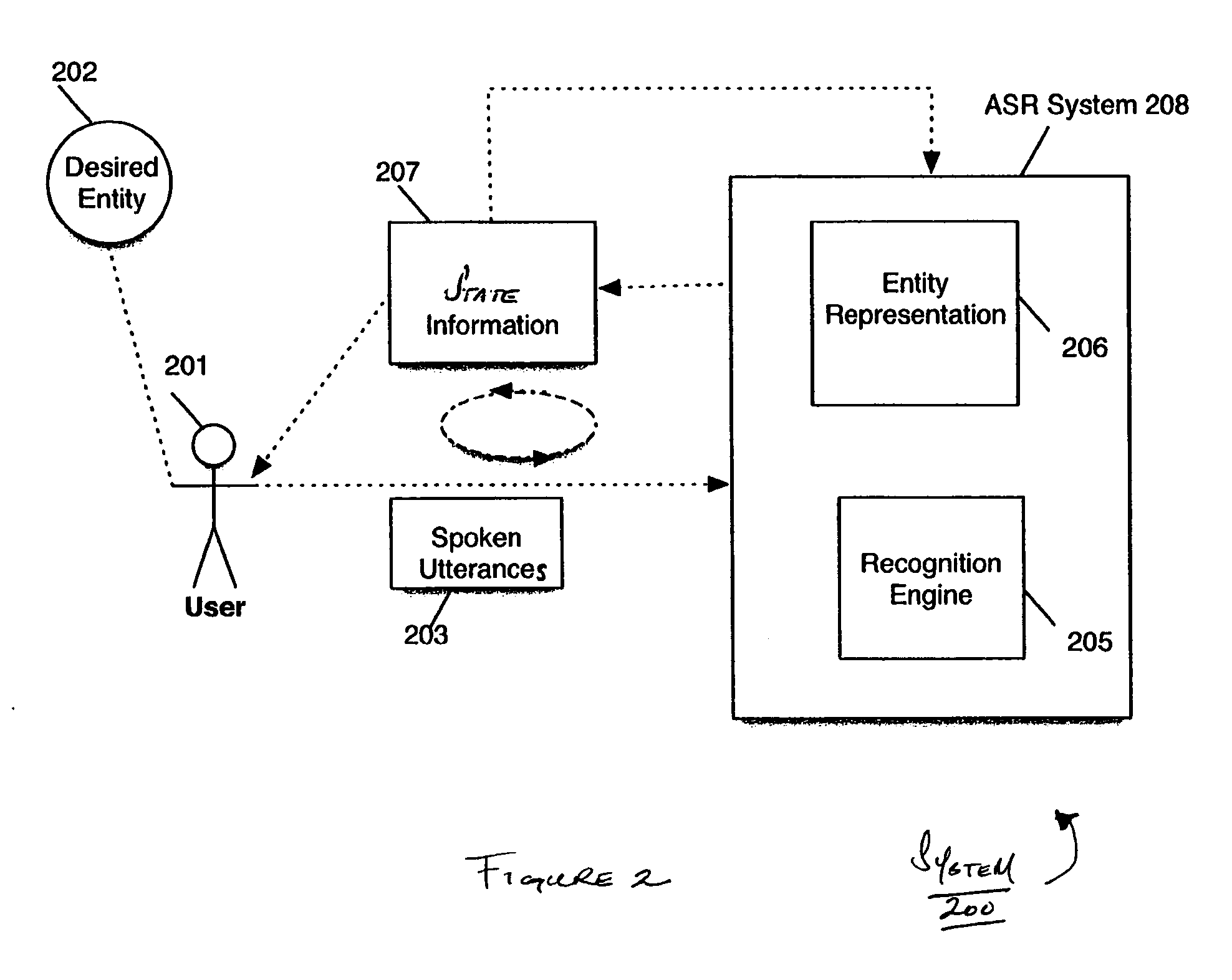User interaction with voice information services
a technology of voice information and user interaction, applied in the field of user interaction with voice information services, can solve the problems of reducing the richness of the search interface, cumbersome interface, slow user, etc., and achieve the effect of enhancing the potential for accurate results and accurate inputs
- Summary
- Abstract
- Description
- Claims
- Application Information
AI Technical Summary
Benefits of technology
Problems solved by technology
Method used
Image
Examples
example implementation
[0137]FIG. 7 shows an example system implementation (system 700) according to one embodiment consistent with principles of the invention. In the example shown, a user (e.g., user 201) operating a cellular phone provides a speech signal through a voice network 703 to a system in order to obtain information relating to one or more database entries (e.g., directory service listings).
[0138] The “user” in one example is a person using a cellular phone, speaking to a called directory service number (e.g., 411). The user may speak into a microphone of cellular phone 701 (e.g., with microphone within the cellular phone, an “earbud” associated with phone, etc.). Cellular phone 701 may also include a display 702 (e.g., an LCD display, TFT display, etc.) capable of presenting to the user a listing of one or more results 707.
[0139] Results 707 may be determined, for example, by a system 704. System 704 may be, for example, a computer system or collection of systems that is / are capable of perf...
PUM
 Login to View More
Login to View More Abstract
Description
Claims
Application Information
 Login to View More
Login to View More - R&D
- Intellectual Property
- Life Sciences
- Materials
- Tech Scout
- Unparalleled Data Quality
- Higher Quality Content
- 60% Fewer Hallucinations
Browse by: Latest US Patents, China's latest patents, Technical Efficacy Thesaurus, Application Domain, Technology Topic, Popular Technical Reports.
© 2025 PatSnap. All rights reserved.Legal|Privacy policy|Modern Slavery Act Transparency Statement|Sitemap|About US| Contact US: help@patsnap.com



